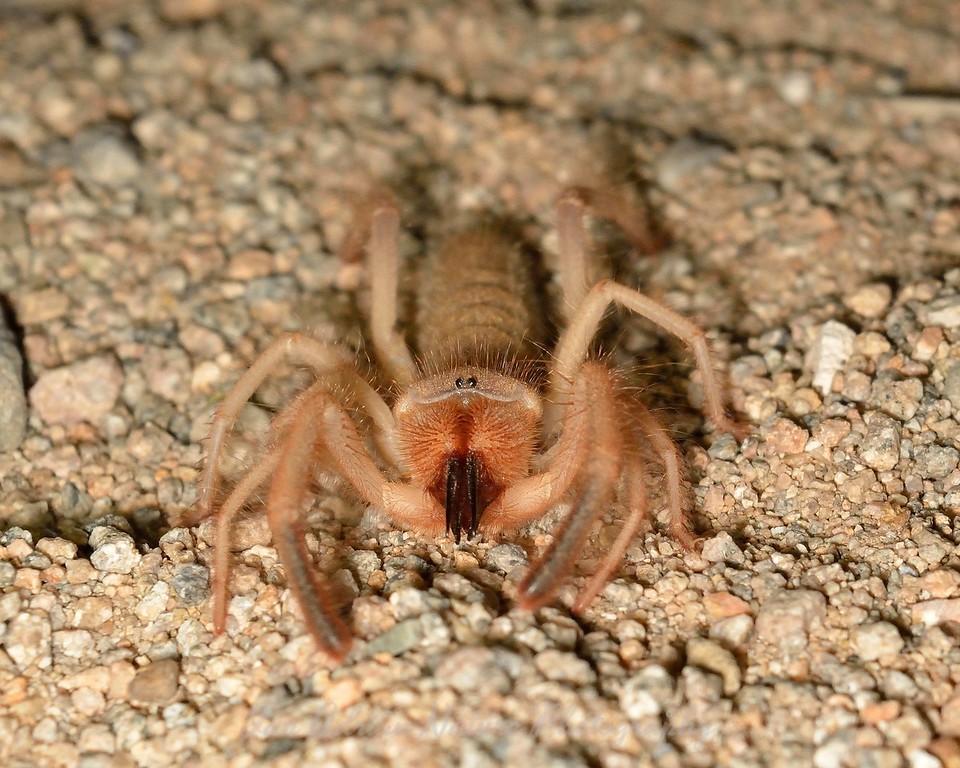
Solfugid Profile
The Solfugid is an arachnid, but is neither scorpion or spider. These terrestrial hunters prowl the desert floor in search of pretty much anything they can overpower and eat. They are non-venomous and, therefore, entirely harmless, but pack a pretty painful bite! The largest species, affectionately known as camel spiders, are well-known by soldiers stationed in the Middle East, as they have a tendency to chase shadows in search of a shady refuge. This behavior is often mistaken for aggression. Saguaro NP West, AZ.
Purchase This Print

Arrow-Shaped Micrathena
A nice, close look at the underside of a tiny Arrow-Shaped Micrathena spider. These lovely orb weavers are denizens of Northeastern US woodlands, where they build rather unique webs. Photo taken in Bald Eagle State Forest, PA, USA.
Purchase This Print
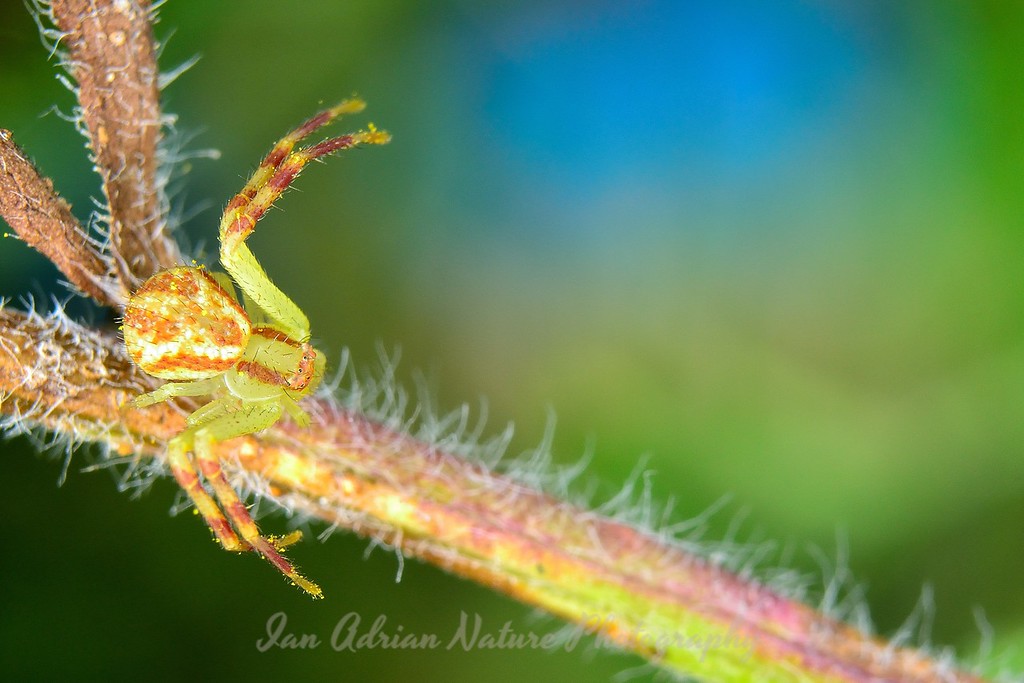
Crab Spider
A tiny northern crab spider awaits prey from a stalk of a glorious goldenrod plant. Crab spiders are true masters of camouflage. They can actually change their colors to perfectly mimic surroundings, thus remaining unnoticed by their flying foods. Photo taken in Winfield, PA, USA.
Purchase This Print
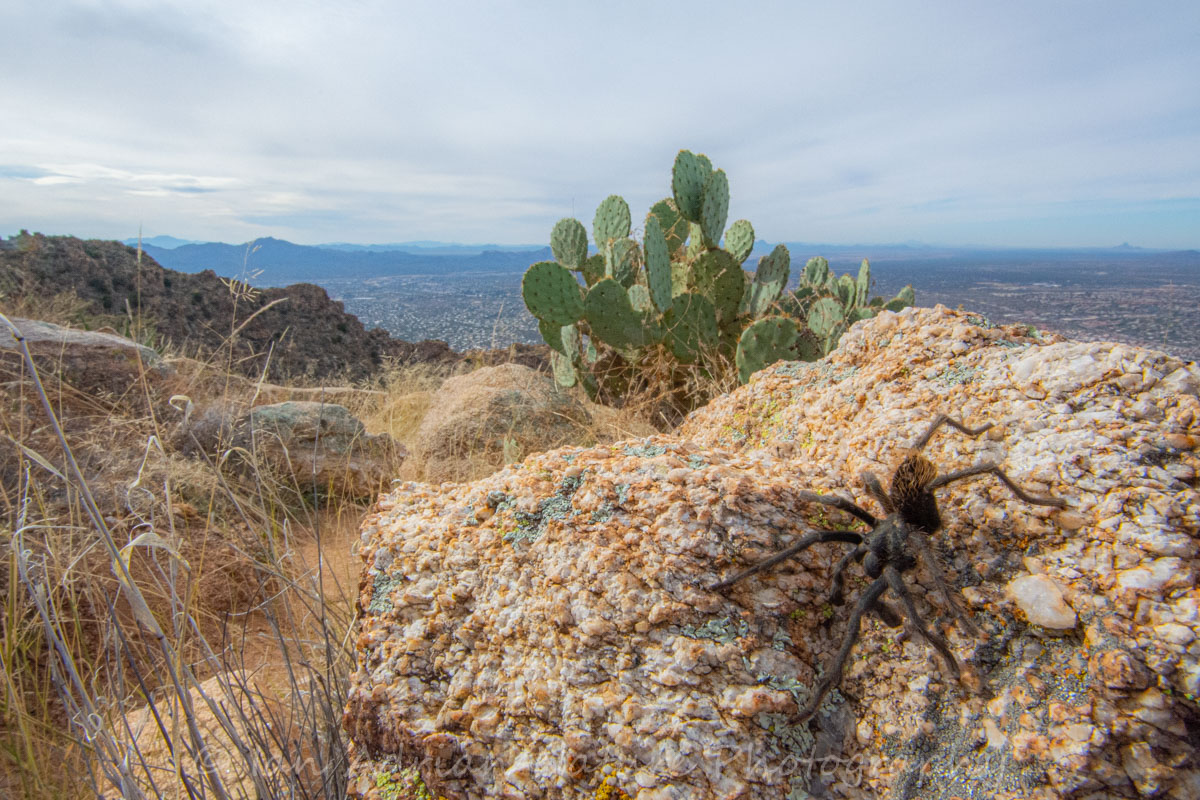
Catalina Tarantula
When respectfully photographing creatures without restricting their movement, incredible things often occur. In this case, Mr Tarantula (species unknown) actually decided to amble across an enormous boulder, presenting this unique "in situ" photo op! Catalina Mountains, AZ.
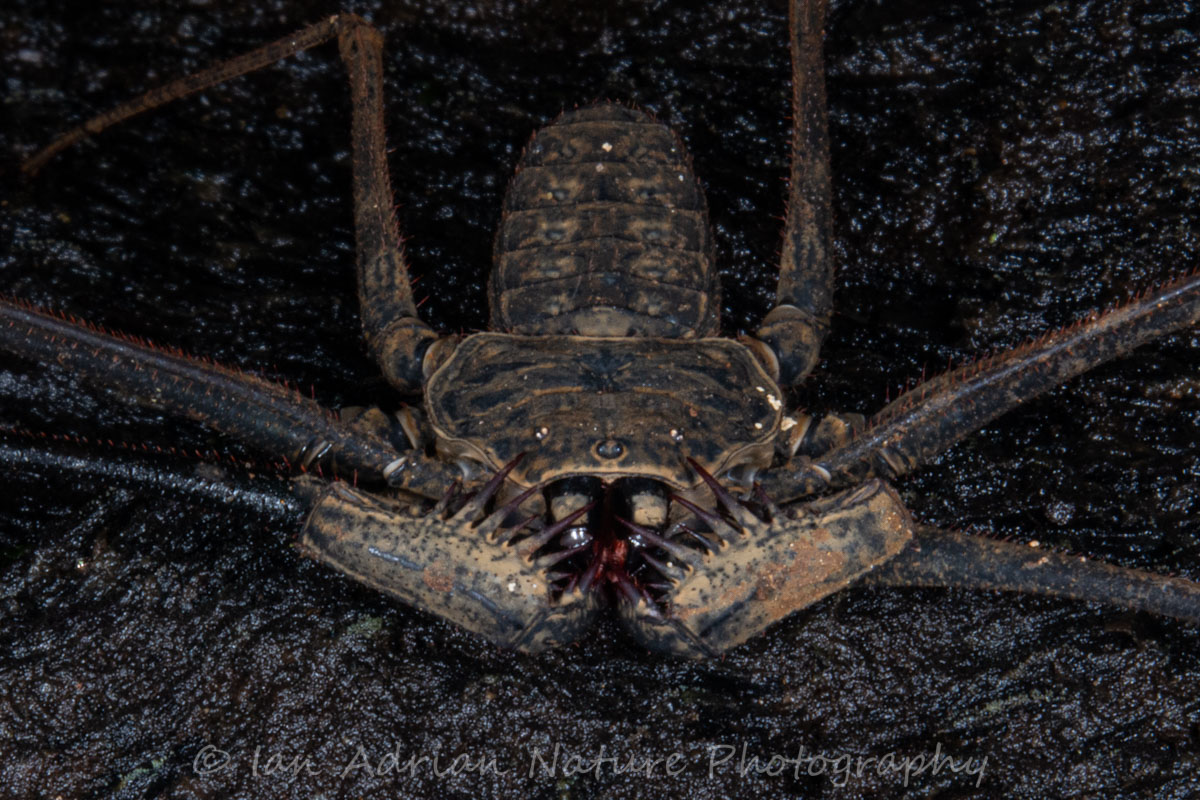
Tailless Whip Scorpion
Perhaps one of the strangest creatures alive, tailless whip scorpions might just be an aliens from another planet. Despite their menacing appearance, these arachnids have no venom and actually eat such creatures as spiders and scorpions (not to mention a host of insect species). This big boy was photographed in Costa Rica, but African, Asia, and the American Southwest all have their own tailless whip scorpions.

Golden Orb Weavers
Golden orb weavers construct beautiful, monstrous webs which often span 6' or more. Their webs are extremely strong. So strong, in fact, that the material is heavily used by humans for fiber optics! Find a good habitat and these lovely arachnids are quite abundant, often living in absurdly close proximity to one-another.

Arachnid Ambush
While meandering down the trail, I nearly bumped into this protruding stick. Only on the return hike did I realize that it was occupied. Large spider species unknown. Possibly a wandering spider? Dos Brazos de Tigre, Costa Rica.
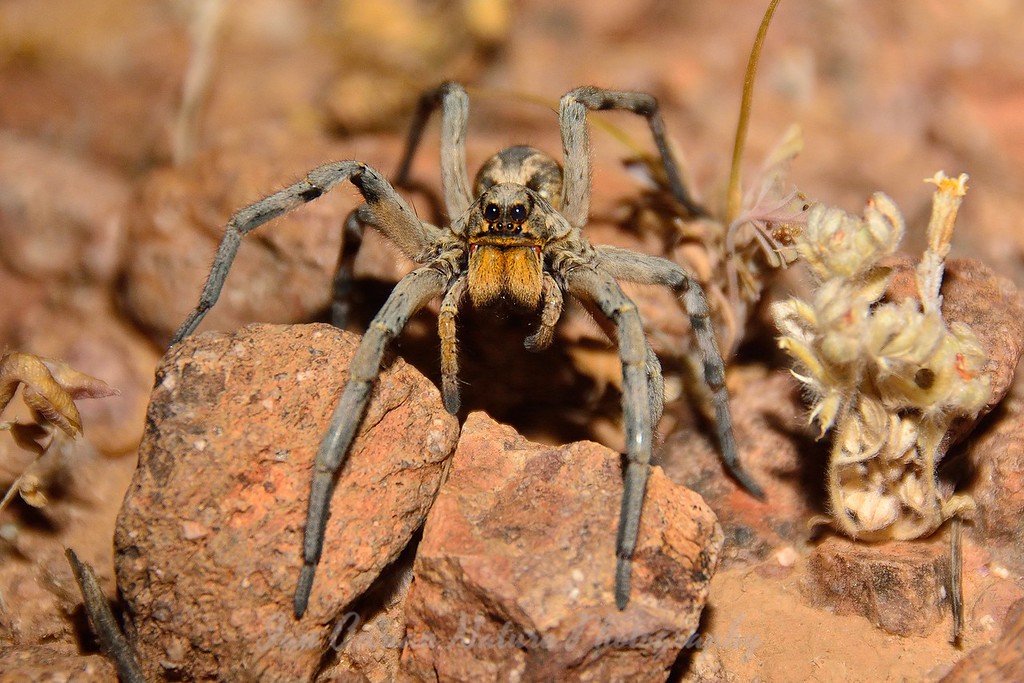
Carolina Wolf Spider
A Carolina Wolf Spider, briefly interrupted from his / her search for food. For this shot, I had to lay on the ground, less than a foot from my subject. Photographed near Tucson, AZ, USA.
Purchase This Print
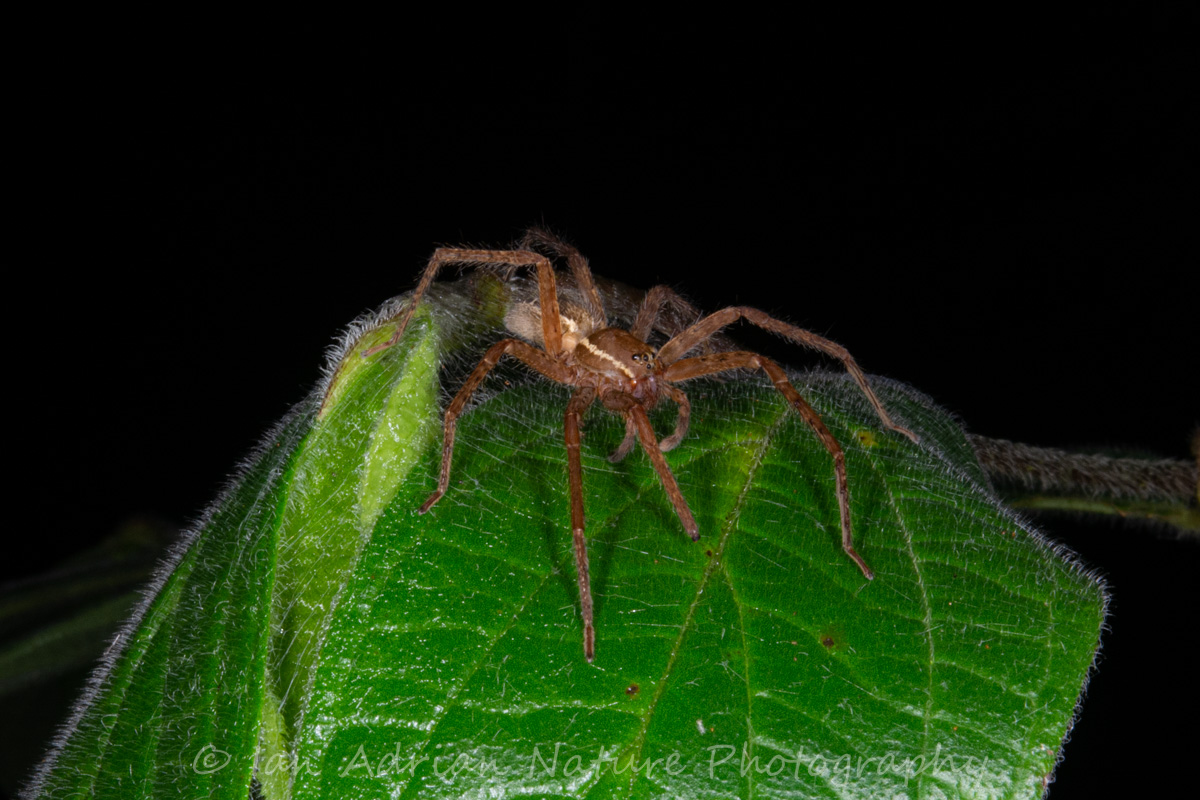
Spider on a Leaf
The jungle is certainly a thrilling place to explore while graced by daylight. Come nightfall, however, an entirely different cast of characters emerge, such as many of the frogs and "creepy crawlies." Unknown species encountered near Dos Brazos de Tigre, Costa Rica.

Jumping Spider
On a super-macro level, I find it fascinating that some spiders become exponentially creepier while others become downright adorable. This jumping spider (species unknown) definitely fits the latter category. Not only is their hunting style entirely unique, but jumping spiders, in particular are considered quite clever. In fact, they can supposedly recognize different humans. Photo taken in Winfield, PA, USA. This image is not currently available for sale. Please check back for future availability!
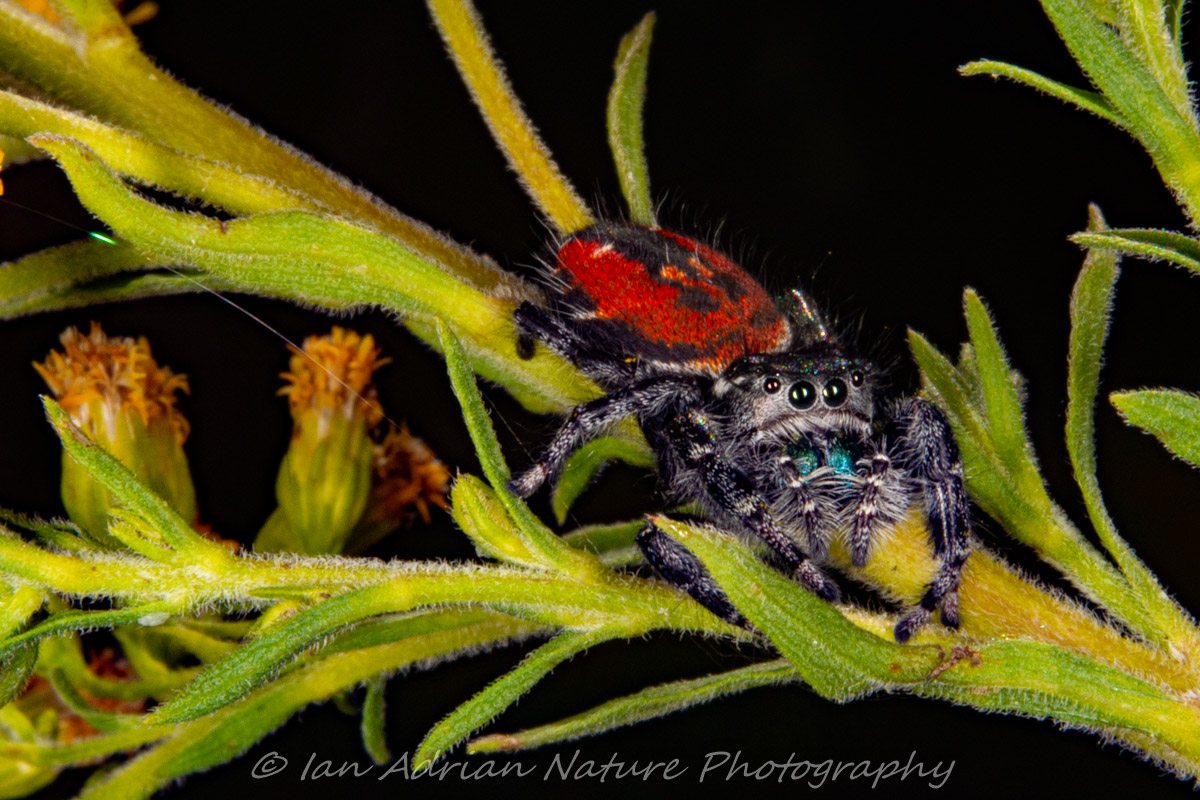
Red-Backed Jumper
Meet one of the most stunning jumping spiders within the US, and definitely the most brilliant I've met! This red-backed jumping spider was only the second of her kind that I've met.
Chiricahua Mountains, AZ.
Purchase This Print
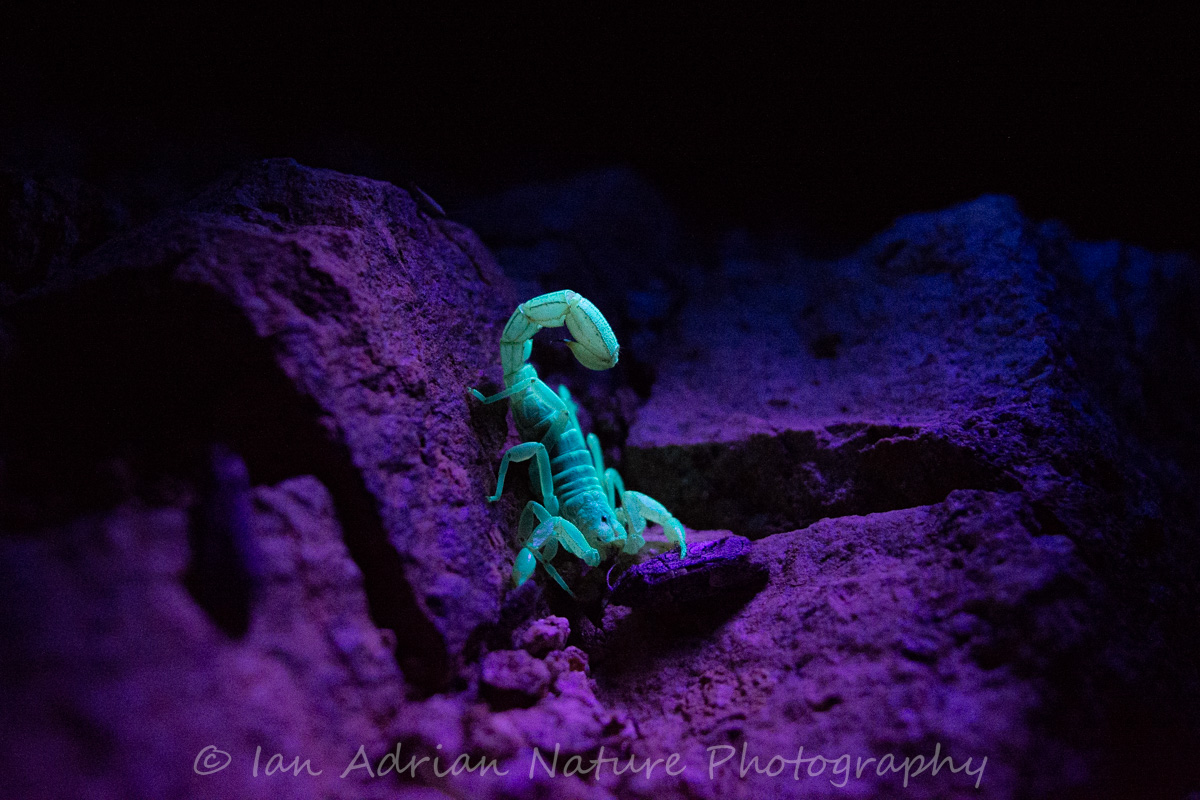
Blacklit Beauty
Due to the chemical composition of their exoskeletons, most (if not all) scorpions glow blue when viewed at night, using a black light. Despite the sinister name, this species has quite mild venom. Stripe-tailed "devil" scorpion photographed near Tucson, AZ, USA.
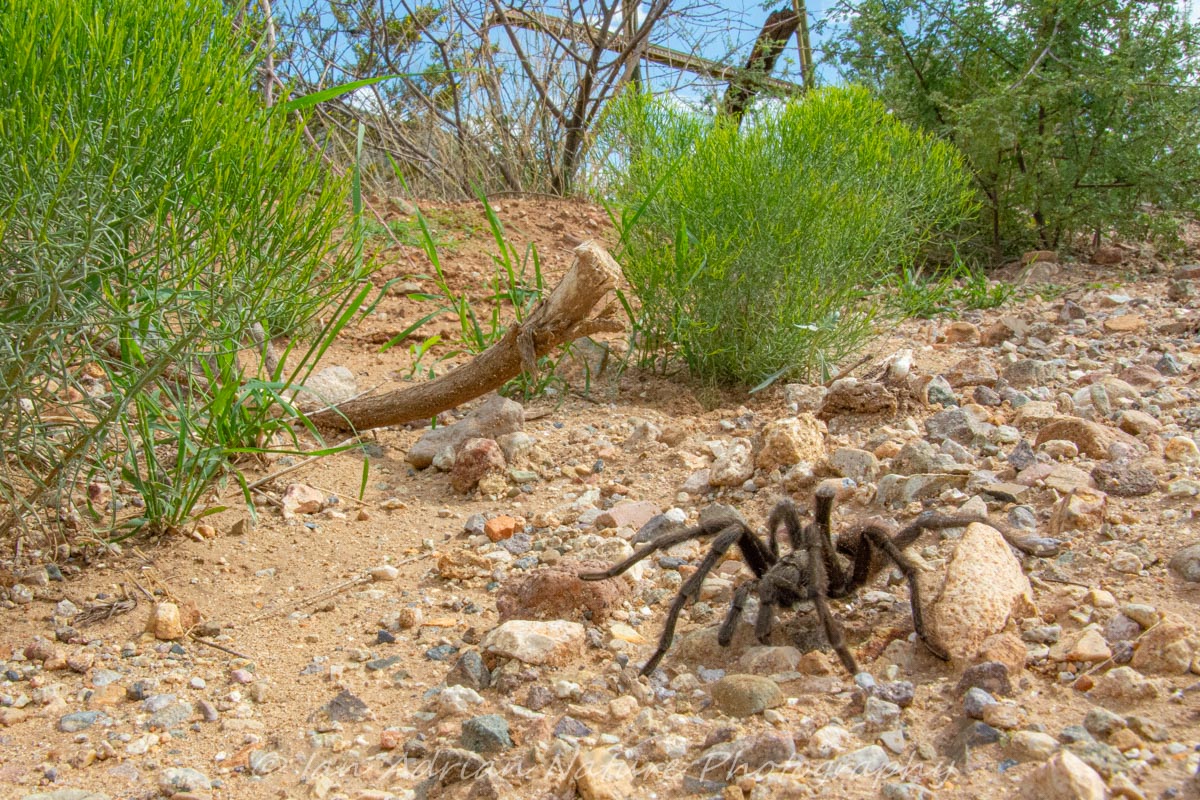
The Tale of A Tarantula
Regardless of species, male tarantulas have it rough. Upon reaching adulthood, they have a very short window in which to manically seek out a mate before promptly dying. Sometimes, the female eats her gentleman caller during or promptly after courtship, making his short life even shorter. San Simon, AZ.
Purchase This Print

Arrowhead Orb Weaver
Found in shaded forests, this lesser-encountered Orb Weaver species is one of the few spider species to hang on the web with her head pointed upwards. Photographed in Bald Eagle State Forest, PA, USA.
Purchase This Print
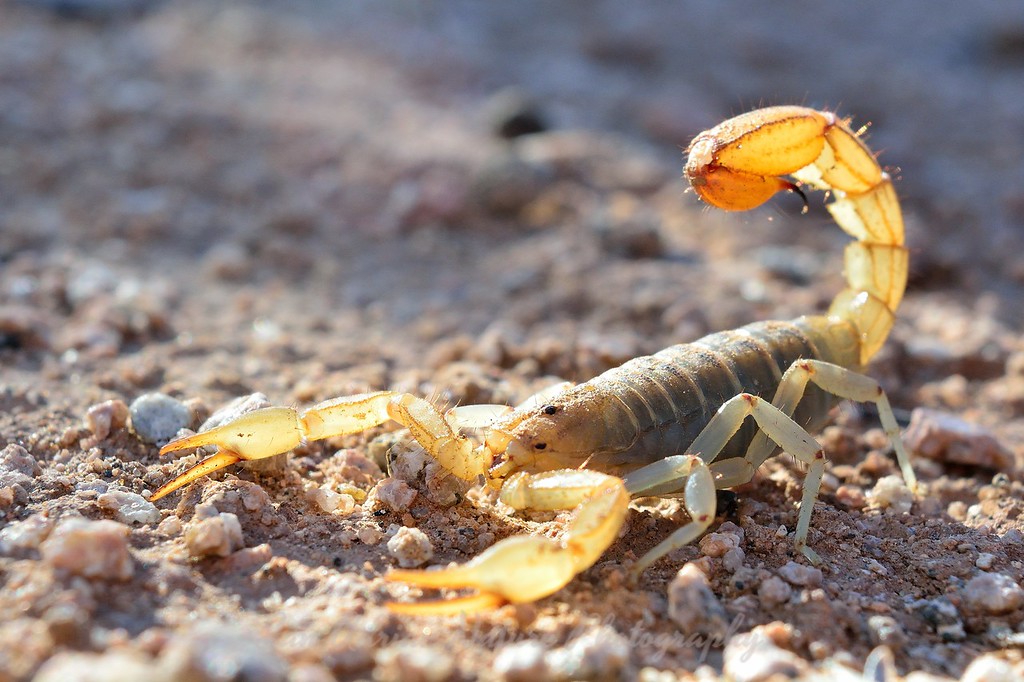
Translucent Scorpion
Backlighting from the late-afternoon sun offered a translucent effect to this large devil scorpion. Especially common in loose, sandy soil, stripe-tailed devil scorpions can be pretty feisty but are largely harmless to humans. Picture Rocks, AZ, USA.
Purchase This Print
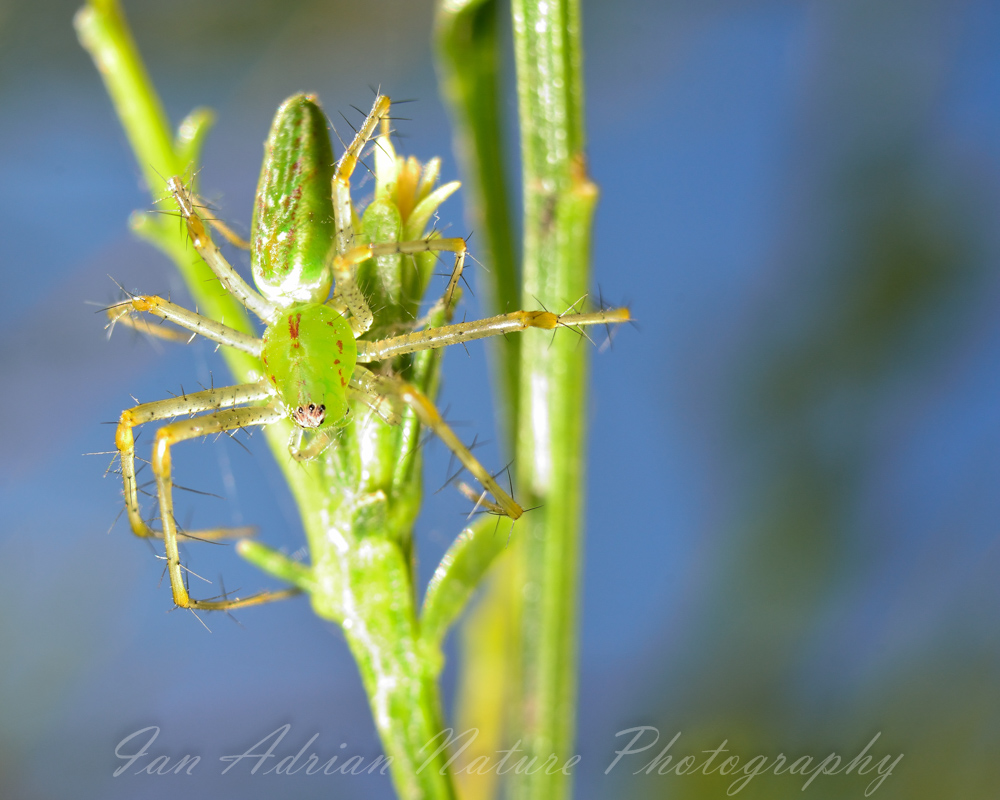
Lynx Spider
The beautifully-colored green lynx spider shows off his / her superb camouflage. Lynx spiders are known to be especially ferocious in guarding their egg sacs. Who can blame a mom for protecting her babies? Photo taken at Mt. Lemmon, AZ.
Purchase This Print

Superb Spider
Could this northern crab spider have chosen a more brilliant ambush location? Ironically, the delicious morsel that he / she is consume isn't a pollinator at all, but rather, a much smaller crab spider. Winfield, PA.
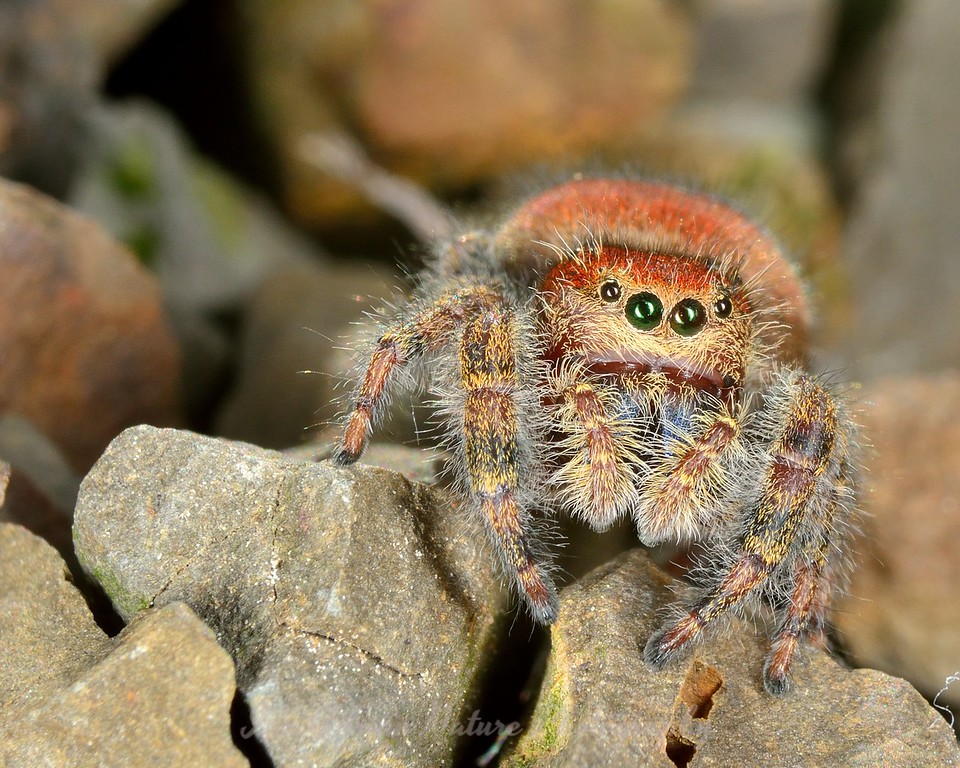
Cardinal Jumper
Sometimes photo subjects are encountered in the funniest places. While searching for fossils, I unintentionally unearthed this little cardinal jumping spider from a layer of rock in which she was hiding. Not only is their hunting style entirely unique, but jumping spiders, in particular are considered quite clever. In fact, they can supposedly recognize different humans. Photo taken near Beaver Springs, PA, USA.
Purchase This Print

Solfugid Profile
The Solfugid is an arachnid, but is neither scorpion or spider. These terrestrial hunters prowl the desert floor in search of pretty much anything they can overpower and eat. They are non-venomous and, therefore, entirely harmless, but pack a pretty painful bite! The largest species, affectionately known as camel spiders, are well-known by soldiers stationed in the Middle East, as they have a tendency to chase shadows in search of a shady refuge. This behavior is often mistaken for aggression. Saguaro NP West, AZ.
Purchase This Print

Arrow-Shaped Micrathena
A nice, close look at the underside of a tiny Arrow-Shaped Micrathena spider. These lovely orb weavers are denizens of Northeastern US woodlands, where they build rather unique webs. Photo taken in Bald Eagle State Forest, PA, USA.
Purchase This Print

Crab Spider
A tiny northern crab spider awaits prey from a stalk of a glorious goldenrod plant. Crab spiders are true masters of camouflage. They can actually change their colors to perfectly mimic surroundings, thus remaining unnoticed by their flying foods. Photo taken in Winfield, PA, USA.
Purchase This Print

Catalina Tarantula
When respectfully photographing creatures without restricting their movement, incredible things often occur. In this case, Mr Tarantula (species unknown) actually decided to amble across an enormous boulder, presenting this unique "in situ" photo op! Catalina Mountains, AZ.

Tailless Whip Scorpion
Perhaps one of the strangest creatures alive, tailless whip scorpions might just be an aliens from another planet. Despite their menacing appearance, these arachnids have no venom and actually eat such creatures as spiders and scorpions (not to mention a host of insect species). This big boy was photographed in Costa Rica, but African, Asia, and the American Southwest all have their own tailless whip scorpions.

Golden Orb Weavers
Golden orb weavers construct beautiful, monstrous webs which often span 6' or more. Their webs are extremely strong. So strong, in fact, that the material is heavily used by humans for fiber optics! Find a good habitat and these lovely arachnids are quite abundant, often living in absurdly close proximity to one-another.

Arachnid Ambush
While meandering down the trail, I nearly bumped into this protruding stick. Only on the return hike did I realize that it was occupied. Large spider species unknown. Possibly a wandering spider? Dos Brazos de Tigre, Costa Rica.

Carolina Wolf Spider
A Carolina Wolf Spider, briefly interrupted from his / her search for food. For this shot, I had to lay on the ground, less than a foot from my subject. Photographed near Tucson, AZ, USA.
Purchase This Print

Spider on a Leaf
The jungle is certainly a thrilling place to explore while graced by daylight. Come nightfall, however, an entirely different cast of characters emerge, such as many of the frogs and "creepy crawlies." Unknown species encountered near Dos Brazos de Tigre, Costa Rica.

Jumping Spider
On a super-macro level, I find it fascinating that some spiders become exponentially creepier while others become downright adorable. This jumping spider (species unknown) definitely fits the latter category. Not only is their hunting style entirely unique, but jumping spiders, in particular are considered quite clever. In fact, they can supposedly recognize different humans. Photo taken in Winfield, PA, USA. This image is not currently available for sale. Please check back for future availability!

Red-Backed Jumper
Meet one of the most stunning jumping spiders within the US, and definitely the most brilliant I've met! This red-backed jumping spider was only the second of her kind that I've met.
Chiricahua Mountains, AZ.
Purchase This Print

Blacklit Beauty
Due to the chemical composition of their exoskeletons, most (if not all) scorpions glow blue when viewed at night, using a black light. Despite the sinister name, this species has quite mild venom. Stripe-tailed "devil" scorpion photographed near Tucson, AZ, USA.

The Tale of A Tarantula
Regardless of species, male tarantulas have it rough. Upon reaching adulthood, they have a very short window in which to manically seek out a mate before promptly dying. Sometimes, the female eats her gentleman caller during or promptly after courtship, making his short life even shorter. San Simon, AZ.
Purchase This Print

Arrowhead Orb Weaver
Found in shaded forests, this lesser-encountered Orb Weaver species is one of the few spider species to hang on the web with her head pointed upwards. Photographed in Bald Eagle State Forest, PA, USA.
Purchase This Print

Translucent Scorpion
Backlighting from the late-afternoon sun offered a translucent effect to this large devil scorpion. Especially common in loose, sandy soil, stripe-tailed devil scorpions can be pretty feisty but are largely harmless to humans. Picture Rocks, AZ, USA.
Purchase This Print

Lynx Spider
The beautifully-colored green lynx spider shows off his / her superb camouflage. Lynx spiders are known to be especially ferocious in guarding their egg sacs. Who can blame a mom for protecting her babies? Photo taken at Mt. Lemmon, AZ.
Purchase This Print

Superb Spider
Could this northern crab spider have chosen a more brilliant ambush location? Ironically, the delicious morsel that he / she is consume isn't a pollinator at all, but rather, a much smaller crab spider. Winfield, PA.

Cardinal Jumper
Sometimes photo subjects are encountered in the funniest places. While searching for fossils, I unintentionally unearthed this little cardinal jumping spider from a layer of rock in which she was hiding. Not only is their hunting style entirely unique, but jumping spiders, in particular are considered quite clever. In fact, they can supposedly recognize different humans. Photo taken near Beaver Springs, PA, USA.
Purchase This Print
The animal kingdom’s arachnid class includes such creatures as spiders, scorpions, harvestmen, and ticks, as well as some outrageous oddities (such as vinegaroons and solfugids). These underappreciated creatures are often written off as pests, and dealt with as such. If one were to give pause to their persecution, however, one might consider how enriched our world is by these creepy-crawlies (making the exception of ticks, because everyone hates them, myself included). Have you ever seen the beautifully intricate web of an orb weaver? What about the outstanding turquoise color of a scorpion, resting under a black light? Perhaps a spider’s web covered in dewdrops, glimmering in the morning sun? All of these things offer a testament to the value of arachnids, not to mention the astronomical number of insects they consume, including large numbers of flies, mosquitoes, and gnats. In this album, you will find some captivating examples of arachnids, especially spiders!
